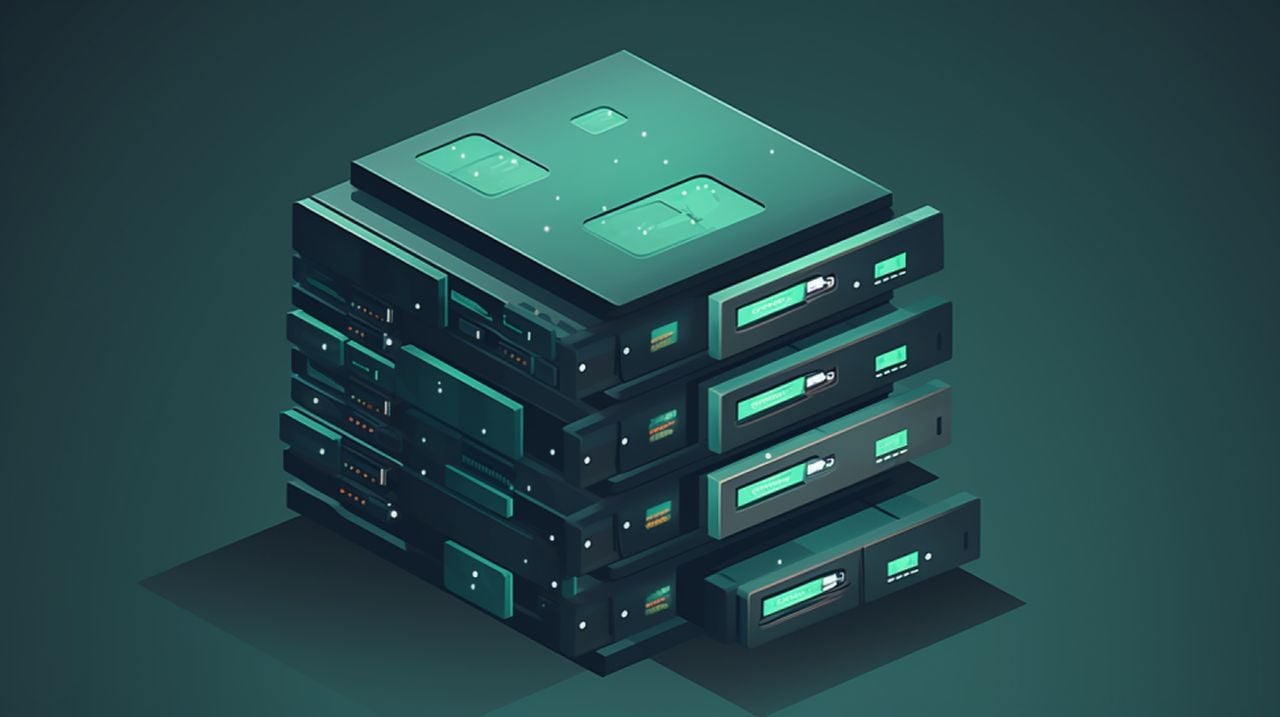
If your main computer is running out of storage and you are considering adding external storage. Or perhaps your home network of devices could do with a secure main central backup solution. You may be interested in building your very own network attached storage solution or NAS using one of the many different mini PC systems available.
Setting up a Network Attached Storage (NAS) system might seem daunting, especially if you’re not deeply familiar with computer hardware and software. But don’t worry, with the right tools and guidance, you can successfully create your own NAS using a mini PC and Open Media Vault. This guide will take you through the entire process, from selecting the right hardware to installing the necessary software and configuring your system to suit your needs.
To act as the foundation for your NAS, Christopher Barnatt suggest using the Bmax B1 Plus mini PC. Although you can use any other single board computer that might take your fancy, such as the new Raspberry Pi 5. Or an older version that might be collecting dust in your drawer.
The Bmax B1 Plus is small but mighty device powered by a dual-core Celeron N3350 processor and comes with 6 GB of RAM. The Celeron N3350 is a reliable processor that provides sufficient power for a small-scale NAS setup. The 6 GB of RAM ensures smooth operation, even when multiple users are accessing the system simultaneously, guaranteeing a seamless user experience.
Openmediavault software
Open Media Vault (OMV) is a free, open-source software that allows you to convert a PC into a NAS. It’s built on the sturdy Debian Linux platform and offers a user-friendly web-based interface for easy NAS management. OMV requires at least two drives: a system drive of at least 4 GB and one or more data drives for network storage. The system drive houses OMV and its operating system, while the data drive stores your files, keeping system and user data separate.
“OMV is the next generation network attached storage (NAS) solution based on Debian Linux. It contains services like SSH, (S)FTP, SMB/CIFS, RSync and many more ready to use. Thanks to the modular design of the framework it can be enhanced via plugins. openmediavault is primarily designed to be used in small offices or home offices, but is not limited to those scenarios. It is a simple and easy to use out-of-the-box solution that will allow everyone to install and administrate a Network Attached Storage without deeper knowledge.”
How to build a NAS using a mini PC
Watch the excellent tutorial below, kindly created by Christopher Barnatt and the Explaining Computers channel on how you can use a mini PC to create a fully functional NAS storage solution.
Other articles you may find of interest on the subject of network attached storage solutions:
Installing OMV on the Bmax B1 Plus involves downloading the OMV ISO file, writing it to a USB drive, and then booting the mini PC from this drive. Once the installation is complete, you can access the OMV interface from a web browser using the mini PC’s IP address, allowing for easy remote NAS management.
The next step in setting up your NAS is creating and mounting a file system. This involves formatting the data drive and assigning it a mount point. OMV supports various file systems, including the X4 file system, which is highly recommended for its stability and performance, ensuring your data is stored securely and can be accessed quickly.
Shared folders are the heart of any NAS. These are the directories that will be accessible over the network. In OMV, you can create shared folders on your data drive and assign them permissions based on user or group, allowing for precise control over who can access what data. You can also enable SMB/CIFS, a protocol that allows shared folders to be accessed from Windows, macOS, and Linux systems, ensuring cross-platform compatibility.
To access the shared folders from different operating systems, connect to the NAS using the mini PC’s IP address and the credentials set up in OMV. On a Windows system, this can be done through the Network Discovery feature. For Linux systems, like Linux Mint or Chrome OS Flex, you can use the built-in file manager, providing a familiar interface for accessing your files.
The benefits of network attached storage NAS
- Centralized Storage: NAS devices provide a central location where data can be stored and retrieved by multiple users and client devices. This centralization simplifies data management and can help prevent data duplication across individual devices.
- Easy File Sharing: With NAS, users on a network can easily share files among different devices, such as computers, smartphones, and tablets. This is particularly useful in a collaborative environment where team members need to access and work on the same files.
- Scalability: NAS systems can often be easily scaled by adding more hard drives or connecting additional NAS units, which allows for flexible expansion to meet growing data storage needs without significant disruption or need for major infrastructure changes.
- Cost-Effective: Deploying a NAS is generally more cost-effective compared to setting up a dedicated file server. The simplicity of a NAS means that you don’t need an extensive IT setup or specialized personnel to maintain it, which can reduce costs.
- Data Redundancy: Many NAS systems include built-in redundancy features, such as RAID (Redundant Array of Independent Disks), which can provide data protection by replicating data across multiple drives. This helps ensure data integrity in the case of a hardware failure.
- Convenience and Efficiency: NAS systems are designed to be easy to use with minimal setup, often offering intuitive user interfaces and simple installation processes. This allows non-technical users to effectively manage and access data.
- Remote Access: Some NAS systems offer remote access features, allowing users to access files over the internet securely. This can be particularly useful for remote work scenarios or when accessing data from multiple locations.
So if you are thinking of creating your very own network attached storage, setting up a NAS using a mini PC and Open Media Vault is a manageable process that requires some patience and technical knowledge. The result is a cost-effective, flexible, and powerful network storage solution that can be accessed from various operating systems, offering a versatile solution for your storage needs.
Filed Under: DIY Projects, Top News
Latest timeswonderful Deals
Disclosure: Some of our articles include affiliate links. If you buy something through one of these links, timeswonderful may earn an affiliate commission. Learn about our Disclosure Policy.

